kW and kWh: A Detailed Explanation
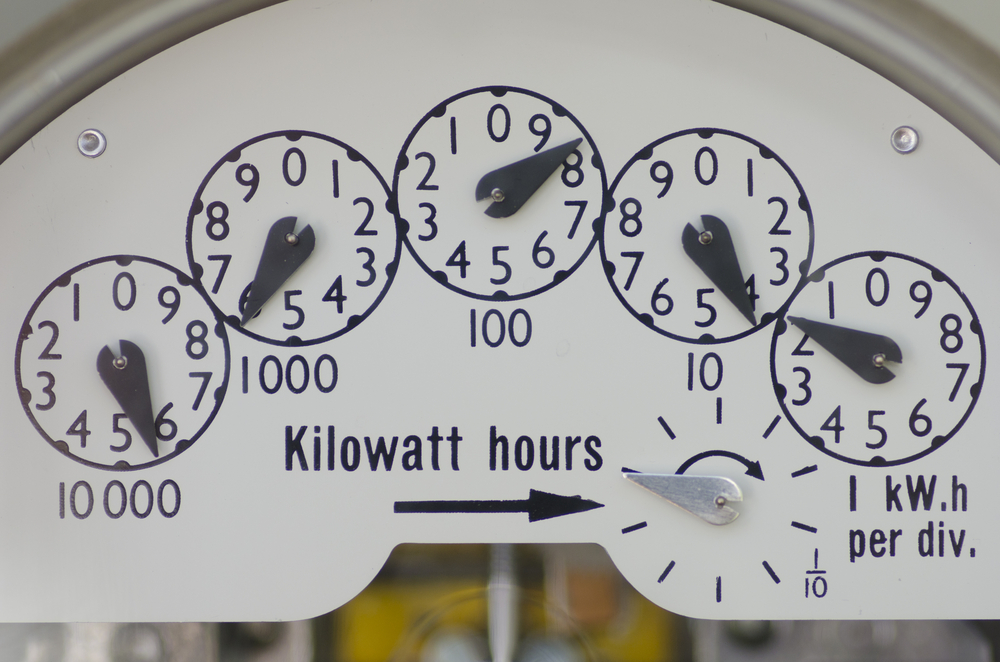
When you get your electricity bill, the chances are high that you look at the total cost first. Most likely, you stop at that and don’t bother examining the number of kilowatt-hours (kWh) you’ve consumed. Maybe you don’t even know what those numbers mean and what’s the difference between a kW and a kWh.
Well, you’re not alone. Many people, including some who work in the energy industry, don’t know what a kilowatt is (kW) is, more so how it differs from kilowatt-hours(kWh). Some think the two are the same. They’re not.
If you want to get a grasp of where your utility bases the amount you pay for your energy bills, this article might be of help. So read on.
Watts to kWh Calculator
[wtk_calculator]
kW vs kWh: Difference Between the Two
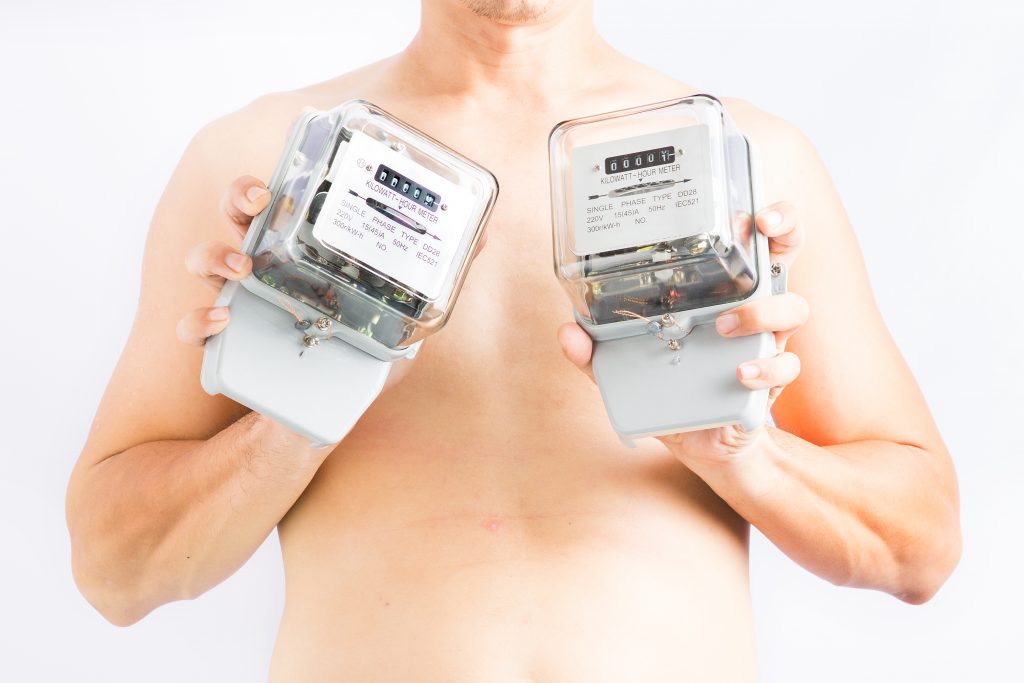
It’s easy to get confused about kilowatts and kilowatt-hours. After all, the two seem almost the same. Their difference lies in what they measure.
Simply put, a kilowatt (kW) reflects the rate of electricity usage, while kilowatt-hour (kWh) shows the total amount of electricity used. Another way to state the difference is this: kW is a measure of energy while kWh is a measure of power.
If you’re still confused about these two terms, think of kilowatt (kW) as the energy that makes your gadgets, appliances, or devices work, while kilowatt-hour (kWh) is the amount of power your electronics use over a specific period.
For example, if your electric heater has a 1,000-watt power rating, that means it needs 1,000 watts or 1 kW of power to run it. Using the heater for one hour will consume 1 kWh of electricity.
What Exactly is Energy?
Energy is the ability to do work. That’s the textbook definition. But what exactly does that mean? Well, for one, it does not refer to the household chores we do every day. Rather, it relates to the application of force to move an object, like when you pedal a bike to propel it forward or when a crane lifts a piece of cargo.
Energy can’t be created nor destroyed. It can only be transformed into a different form. For example, the food you eat contains chemical energy, which your body stores. You use this stored energy when you move around. The kilowatt-hour (kWh) is a unit of energy.
Energy Consumption in Relation to Time
The longer you use a specific device or appliance, the more energy or kWh you consume. It’s as simple as that. So if you want to calculate your energy bill, you’ll have to determine how many watts each of the electronic device, heating, and cooling source, and lighting use and the number of hours you use them.
Here’s a simple formula:
- Determine the watts each device or appliance uses.
- Convert the watts into kilowatts. 1,000 kW equals 1 kWh.
- Find out how many hours a day you use the electronic device.
- Multiply the number of kWh by your utility provider’s cost per kWh.
You can usually find the wattage rating of the device on the label or in the user manual. By knowing your current energy consumption, you can adjust your usage to reduce the cost of your electricity bill.
What Exactly is Power?
Power is the time rate at which work is done, or energy is delivered. The work can be accomplished quickly or slowly, depending on the situation. For example, a lawn mower with a high power output can cut the grass in a short period, while a low-powered one, which has a lower power output, will take longer to finish the task.
You can compute power using this formula:
Power = work/time
or
P = W/t
The traditional measures of power include the following:
- Watts (W)
- Kilowatts (kW)
- Kilowatt-hours (kWh)
- Joule (J)
- Horsepower (hp)
- Ergs ((erg)
- Calories (Cal)
- Foot-pounds (dBm)
- British thermal unit (BTU)
- Refrigeration ton (RT)
How is Power Generated
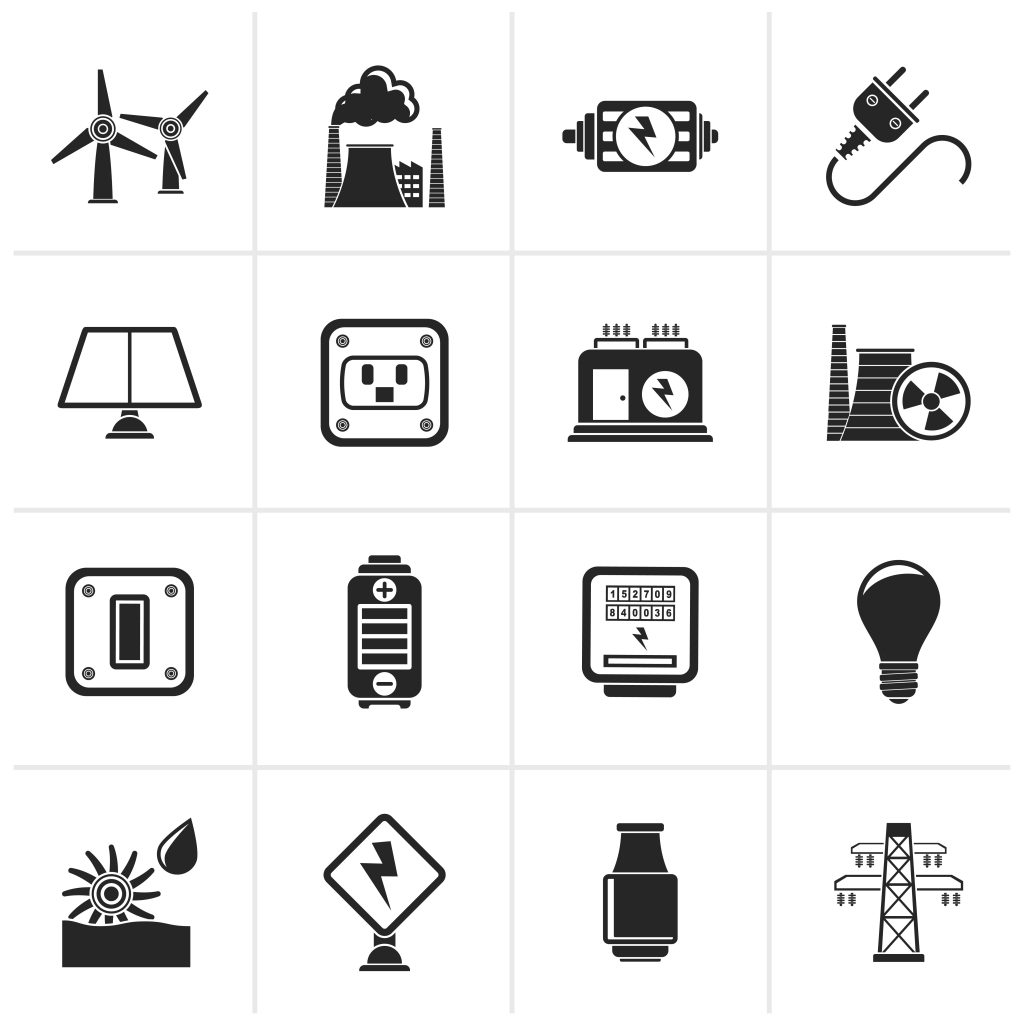
Power does not exist in readily usable forms. As such, it needs to be generated. Electricity generation is the term used for this process. Typically, power generation takes place in power plants, and the process is carried out using electromechanical generators.
There are several methods of power generation.
- Electric generators: These are the most commonly used ways of producing electricity. Most commercial power generation involves the use of electromagnetic induction. With this process, mechanical energy drives a generator to rotate and produce electricity.
- Electrochemistry: This process transforms chemical energy into electricity, as that which occurs in batteries.
- Photovoltaic effect: In this process, the light that comes from the sun turns into solar energy. Photovoltaic panels capture the sun’s rays and convert them into DC energy. Power inverters then turn this DC energy into AC power output for household use. Solar energy costs more to produce than electricity that comes from conventional methods but is more environment-friendly
How is Power Consumed
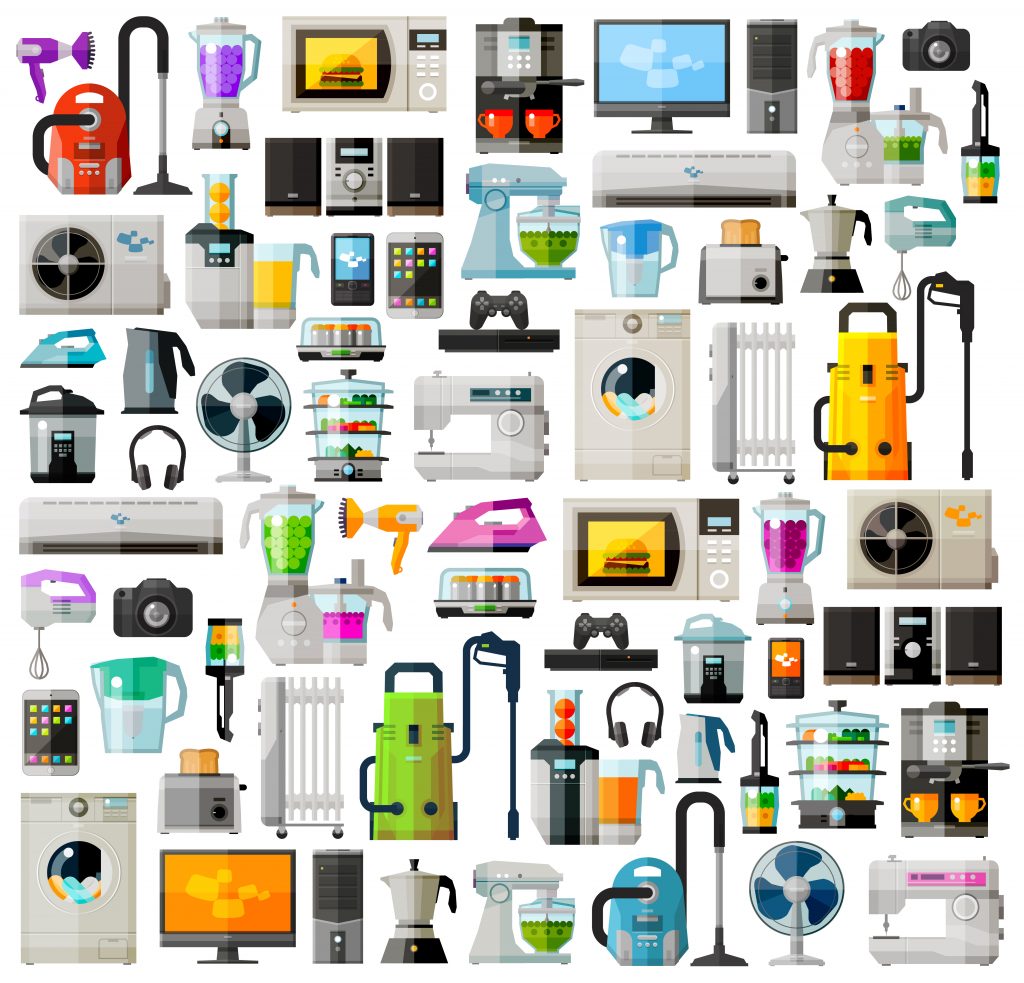
Power consumption occurs when equipment that runs on electricity takes electrical energy and converts it into other forms of energy, such as motion or heat. For example, fans, light bulbs, and computers draw in power and, in turn, perform the tasks they were designed for. Fans circulate air, light bulbs bring light, and computers make our work easier. The rate at which these devices consume energy is their power.
Other Terms for Power
People use other terms in place of power. They may refer to power as load or demand. Others interchange the terms power and energy. At the same time, some think of electrical energy as power. Other terms people commonly associate power include:
- Output
- Joule
- Kilowatt-hour (kWh)
Energy in Relation to Power
The relationship between energy and power can be expressed this way: energy is the ability to cause change, while power is the rate energy is used. For example, lifting a box requires a specific amount of energy to carry out. Power is how fast that energy was transmitted to perform the task of raising a box.
Power is the amount of energy divided by the time it took to use the energy. The unit of power is a watt, which equals one joule per second of energy used.
The Energy and Power Equation
The basic equation that relates to energy with power goes like this:
energy = power * time
Expressing the equation in terms of kW, kWh and hours will result in the following formula:
kWh = kW * h
Where:
kWh is the energy
kW is the power
h is the time in hours
[wtk_calculator]
Getting Familiar With Units for Your Source Data
When you work with figures relating to energy consumption, you must know what units your source data are in. Otherwise, you won’t come up with the correct calculations.
For instance, if you have a unit that’s in kW, but you use the calculations intended for kWh, your data will undoubtedly be off. So make sure of what unit each of your data come in.
How to Calculate the Cost
The cost of electricity is usually expressed in a currency unit over kWh, such as $/kWh or €/kWh or £/kWh. It’s better to use per kWh instead of per kW because the cost of power consumption is a cumulative thing. That is, the more energy you use, the more it costs. If your unit of currency is the dollar, your calculation will be the total number of kWh you consumed over a specific period multiplied by the per kWh rate in dollars.
How to Lower my Energy Cost
As you very well know, energy costs a lot of green bucks. An average U.S. household usually pays over a thousand dollars for electricity per year. As power rates continue to rise, you can expect to spend more on the kWh you use.
Luckily, there are some measures you can employ if you want to prevent the further inflation of those monthly payments.
# 1 Take stock of your daily behavior and make some adjustments
You don’t necessarily need to purchase a whole bunch of energy efficient devices to reduce the kWh of power you consume. Simply turning off the lights and appliances when you’re through using them will help in your energy conservation goals and slash your energy bill.
To see a higher cut on your kWh usage, you can consider doing household chores manually instead of using energy-intensive devices. Hanging your clothes out to dry instead of placing them in a clothes dryer or washing the dishes by hand are good examples of how you can gain great savings through simple behavior modifications.
Even small measures help a lot as the kWh you save accumulate through the weeks and months.
#2 Use a smart thermostat
The Department of Energy (DOE) recommends a temperature setting of 78 degrees for air conditioners and 68 degrees for furnaces to keep homes comfortable during summers and winters while saving on power costs.
A smart, or programmable thermostat lets you conserve more energy since you can set it to turn off or make the house hotter or colder during times when you’re not home.
By using a smart thermostat, you can avoid wasteful energy use without upgrading your heating, ventilation, and air conditioning (HVAC) system and without sacrificing your comfort during hot or chilly weather. On average, a smart thermostat lets you save around $180 on your energy bill per year.
#3 Change your lightbulbs
Incandescent light bulbs not only eat up a lot of watts, but they also need to be replaced more often than the newer, more energy-efficient lighting equipment. Compact fluorescent lights or CFLs, halogen bulbs, and bulbs made of light-emitting diodes (LEDs) consume 25-80% less electricity. They also last three times longer than incandescent light bulbs.
DOE data show that you can save an average of $45 a year by using energy efficient light bulbs, which can easily offset their higher energy prices.
#4 Minimize your heating expenses
Heating water consumes a significant amount of electricity. Other than replacing your current electric water heater with an energy efficient one, there are different measures to reduce the kWh you pay for heating water.
- Use less hot water
- Lower the temperature setting on your electric water heater
- Insulate your water heating unit as well as 5-6 feet of your hot and cold water pipes.
Compared to a traditional water heater, an efficient heater can be around 8-300% more energy efficient.
Add to that, these types of heaters usually last for 10-15 years, which lets your savings grow over a period of time.
#5 Unplug your appliances or consider using smart power strips
Electric devices, which include gadgets and appliances, consume electricity even when they are turned off or in standby mode.
Called phantom loads, this electricity used up by your electronics over time can cost you $200 a year. Smart power strips solve the problem of phantom loads by switching off the power of your electronic devices when they are not in use.
Otherwise, you can unplug your appliances to avoid electricity waste caused by phantom loads that can accumulate over a period of time.
#6 Equip your home with energy efficient windows
Heat loss through windows can cost up to 25% of your heating bill. Replacing single-pane windows with double-pane ones will help prevent hiking the kilowatt hours you use.
If you live in a cold region, gas-filled windows with low-emissivity glass coating, or Low-E, can reduce the heat loss through the window panes, which equates to savings on your utility costs.
Low-E windows are coated with heat-reflective materials that help keep the temperature inside your home constant by reflecting the heat back inside.
On the other hand, regions in warm climates would have some problems with heat entering through the windows, which leads to higher cooling costs. The coating on Low-E windows not only keeps the heat in when the weather is cold, but it can also reduce the amount of heat that is absorbed into the house in areas with warm climates.
Depending on the kind of climate you have, energy efficient windows will let you save between $20 to $95 on the kilowatt hours you shave in a year. Using window shutters, shades, curtains, and awnings can further hike up your energy savings by providing extra insulation between your home and outside temperatures.
#6 Upgrade your heating, cooling and ventilation system
Heating requirements account for over 40% of residential energy use. Due to the colder climate experienced in the northern region of the country, the northern and southern areas of the U.S. have distinct Energy Star rating specifications for gas furnaces.
If you live in the Southern U.S., upgrading to an Energy Star-certified heating system would let you save around 12% on your heating expenses. That is equivalent to roughly $36 a year. Meanwhile, Energy Star-rated furnaces on the Northern side of the country are up to 16% more efficient than their conventional counterparts. That could lead to an average savings of over $90 on your energy expenses.
Air conditioning does not add much to your power costs as it makes up only around 6% of your home’s electrical energy requirements. But still, even those small savings can add up to a substantial amount over time. Air conditioning units with an Energy Star are 8% more efficient compared to traditional models.
Upgrading your home’s ventilation system is another one of those measures that lead to energy efficiency. A network of ducts circulates hot and cold air through your house. If not properly insulated, heat or cold air can escape through those ducts, which could increase your cooling and heating expenses by hundreds of dollars over time. On the other hand, insulating your ventilation ducts can take away up to 20% of the kWh you spend for your heating and cooling costs.
#7 Seal air leaks and insulate your home
Hot or cold air can leak through your vents, windows, and doors. Other sources of air leaks are openings in walls, floors, and ceilings where plumbing and electrical wiring pass through.
When air escapes from those openings, your furnace or air conditioning unit needs to work harder to maintain a constant temperature inside your home. This adds to the number of kilowatt hour you tally. Keep in mind that each watt accumulates and can add to your average energy costs.
Carefully inspect your walls, floors, attic, basement, and crawl spaces as these are the main areas that might need insulation. By sealing those gaps where air could pass through, you prevent electricity waste and lower your total kilowatt-hour use.
#8 Use solar energy
By using solar energy to supplement your electricity needs, you lessen the demands on the grid. In turn, you also decrease the amount of fossil fuels consumed in producing conventional sources of power.
#9 Use your surroundings
Nature can help you shed your home’s usage of electrical energy. Trees provide shade during summer and act as windbreaks during winter, which can lower your cooling and heating costs by up to 25%. Planting trees in strategic areas around your home maximize their positive effect on your energy efficiency efforts.
Deciduous trees like oaks, maples, and beeches that grow on the south and west sides of your property will shade hard surfaces such as driveways and patios. When winter comes, those trees lose their leaves, which allow the sun’s rays to warm your home.
Meanwhile, evergreen trees planted to the north of your house will act as windbreaks throughout the different seasons of the year.
#10 Know your peak hours if you’re under a time of use pricing plan
Peak hours are the times of the day when the power demand is at its highest. During this period, the rate per kilowatt-hour is at the maximum. In contrast, off-peak hours are periods of low electricity demands and the per kilowatt rate is lowest.
By using electrical appliances and devices during the time when power rates are cheapest, you can save on your power expenses. Over a period of time that can lead to more green bucks for you.
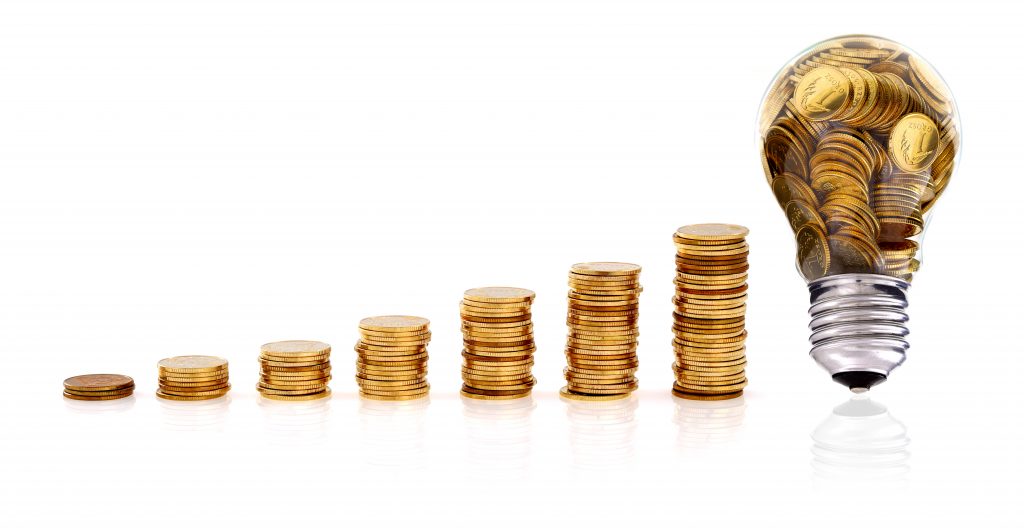
FAQs
What does kWh mean on electric bill?
The kWh or kilowatt-hour on your power reflects the rate of your electricity use. For instance, a one-kilowatt (kW) device used for an hour will consume one kilowatt-hour (kWh). The amount you pay will depend on the electricity rate of your utility provider.
How many kW is a kWh?
There’s no direct way of saying how many units of kW there are in a kWh. Instead, the terms kilowatt (kW) and kilowatt-hours (kWh) are different measurement units that relate to each other and will let you arrive at the amount of power you use. One kWh equates to one hour of electricity use at the rate of 1 kW.
How do you convert kW to kWh?
You’ll need to convert kW to kWh if you want to determine your power usage. This involves finding out how much electricity your electrical appliances and devices use.
Every electrical device has a power rating which gives you the information of how much electricity it consumes. You’ll usually find the rating on the label of the device itself, on the packaging, or at the manufacturer’s website.
The electrical device’s rating is usually given in watts, so you’ll need to know how many watts there are in one kilowatt. One thousand watts is equal to one kilowatt, so divide the rating or wattage by one thousand to determine how kWh it uses.
After dividing the wattage of the electrical device by 1000, multiply the figure you get by the length of time you use the device. That’s how many kWh your device uses.
What is Instantaneous Power?
The term instantaneous power refers to the average amount of energy used over a period of time. Simply put, it means the power that an object is using or generating at a given moment in time. For example, your laptop typically uses an X amount of power while you’re using it. That’s your gadget’s instantaneous power.
If you put it on standby, your laptop’s instantaneous power drops immediately. Bring it back to life, and the instantaneous power rises.
What is Average Power?
Average power means the average amount of power an object uses or generates. That average figure can be based on:
- A specific period of time (i.e., yesterday)
- Over multiple periods of time (i.e., four successive weekends)
- Throughout a specific type of operation (i.e., typical computer use)
Final Words
Knowing the measure of power and the measure of energy plus how they fit in with your energy consumption can help you determine not just how much electricity you use but also how you use it. You can calculate your kilowatts usage over a certain period, get your average consumption and figure out how you can lower your utility bill.
Updated on
